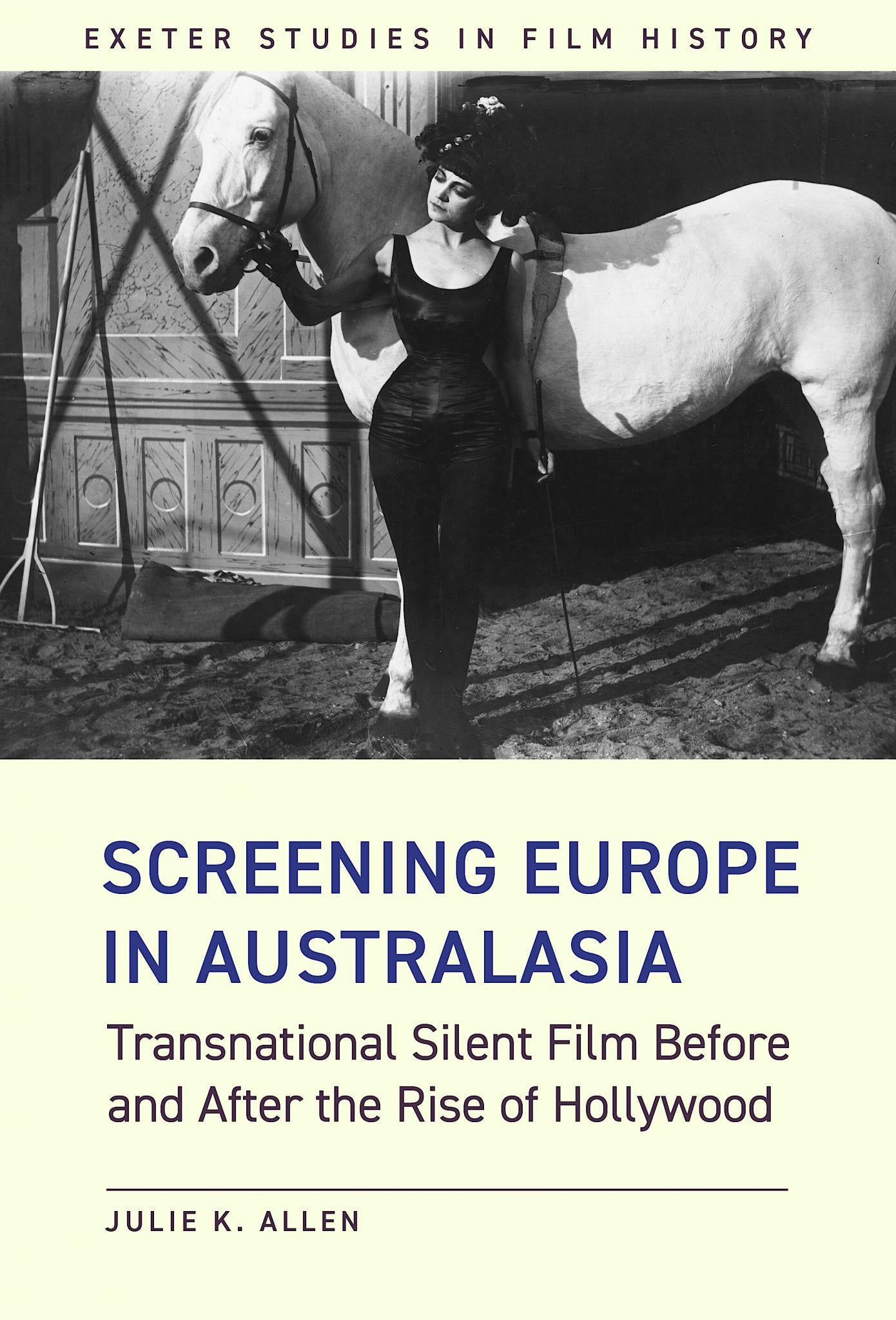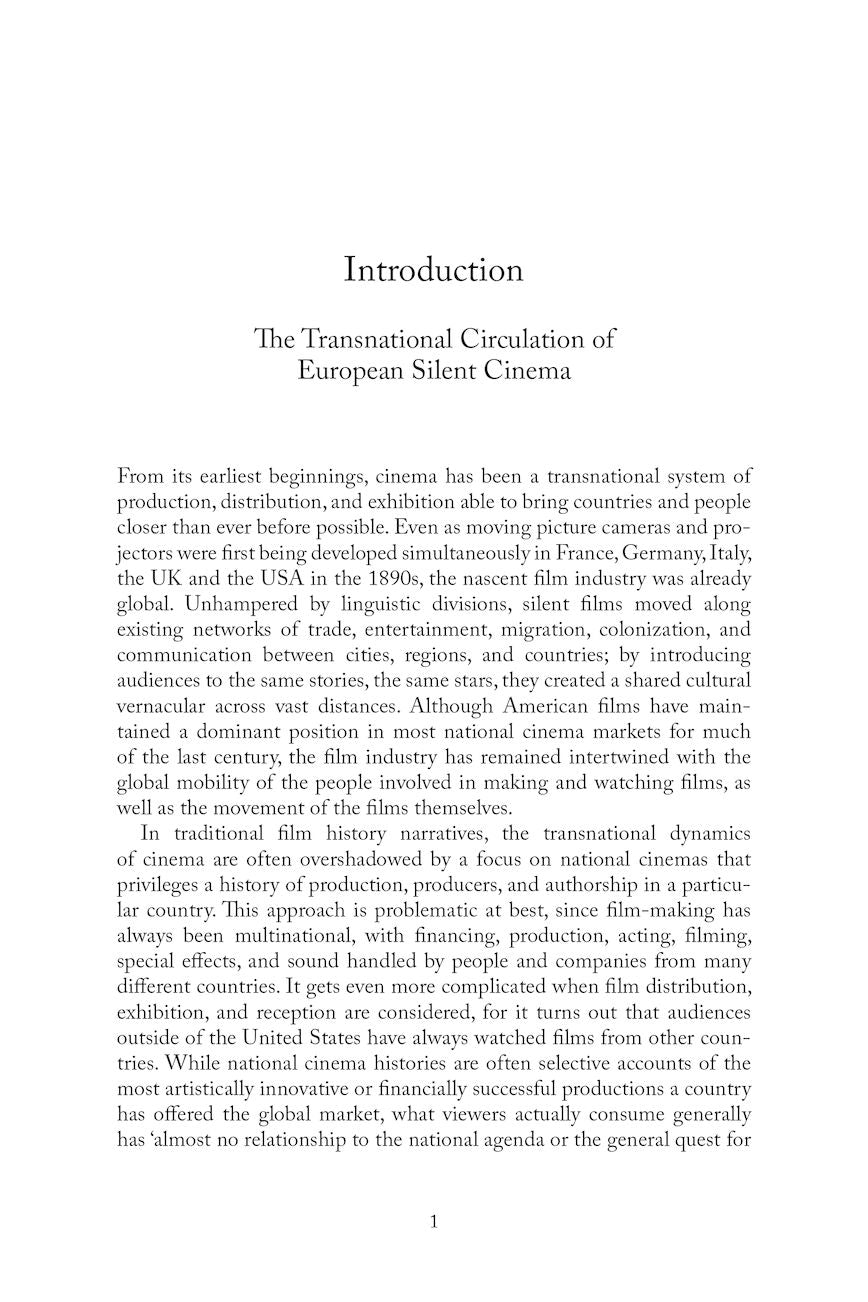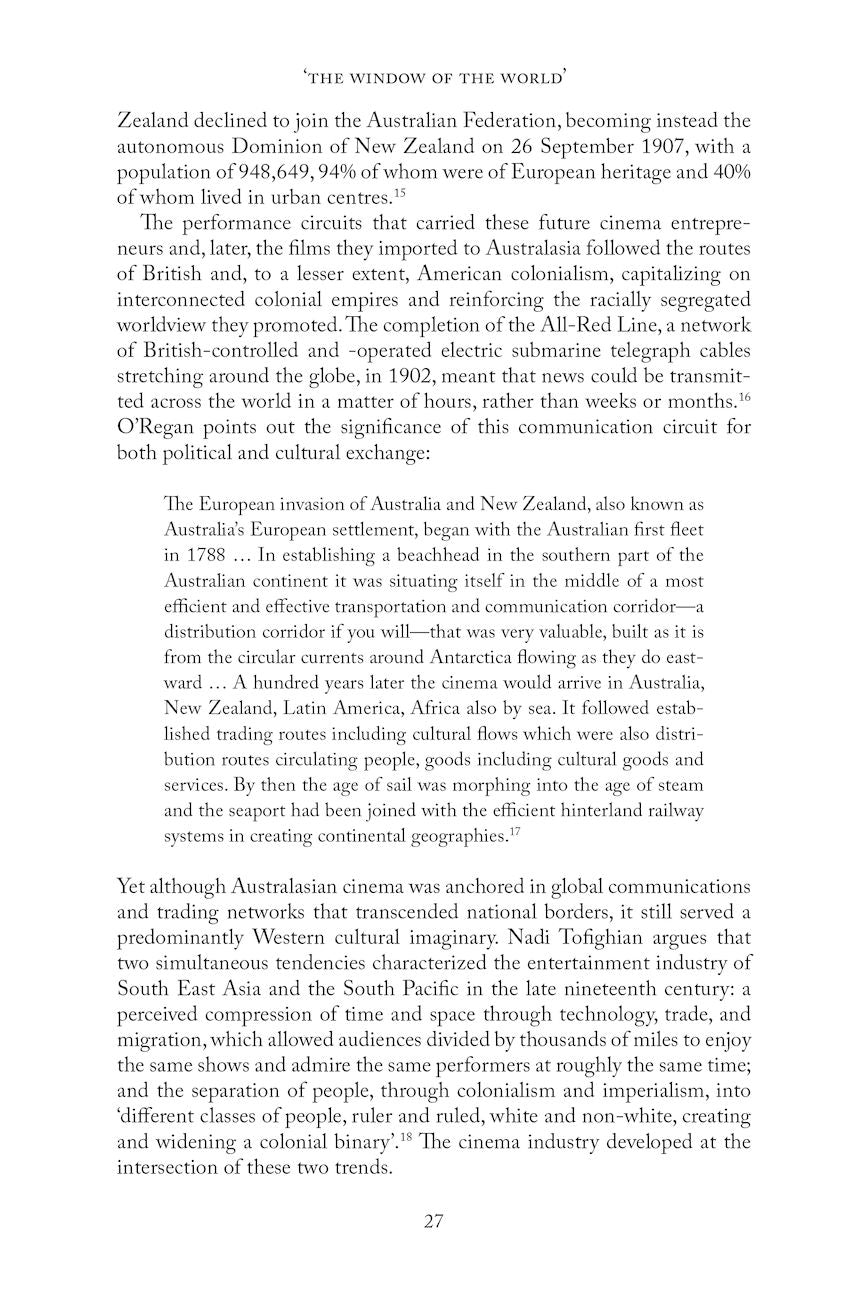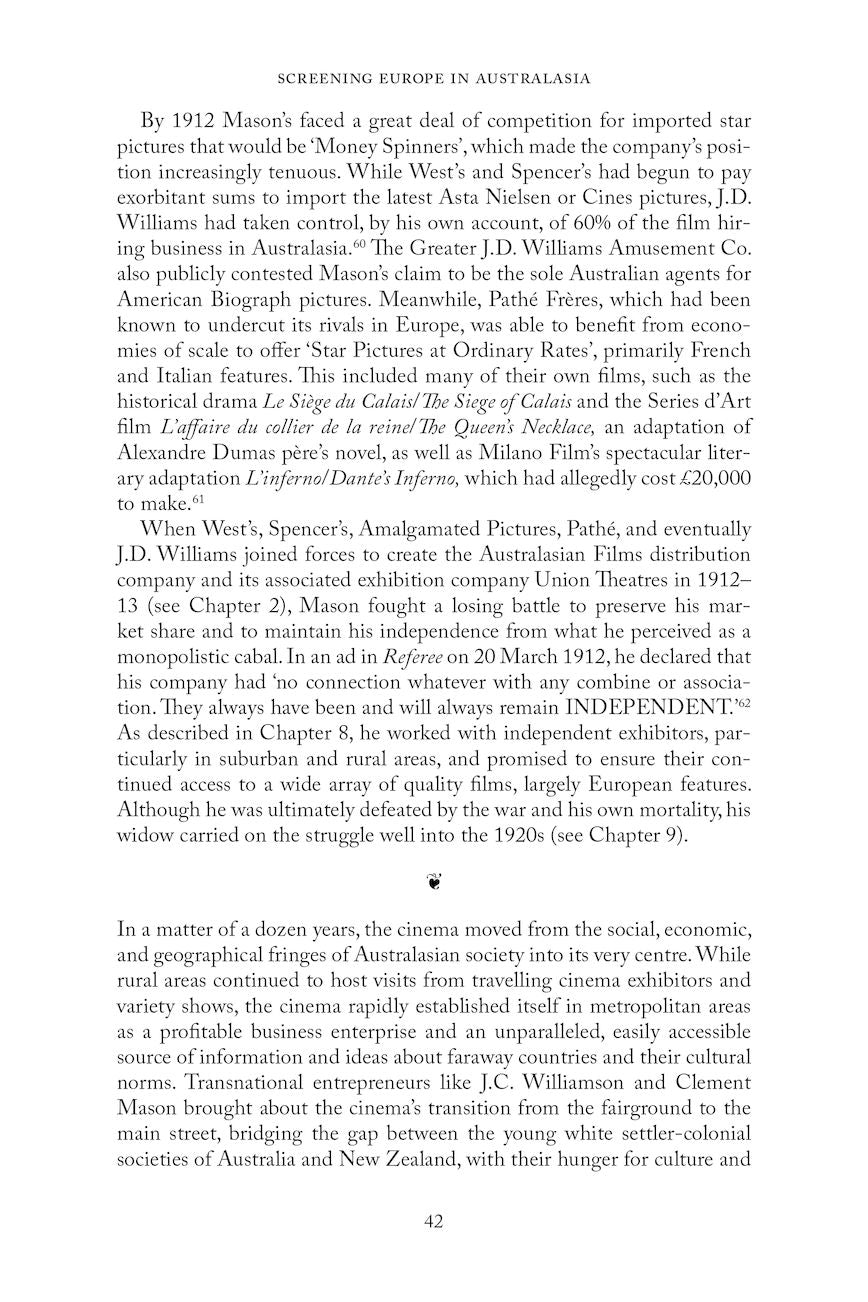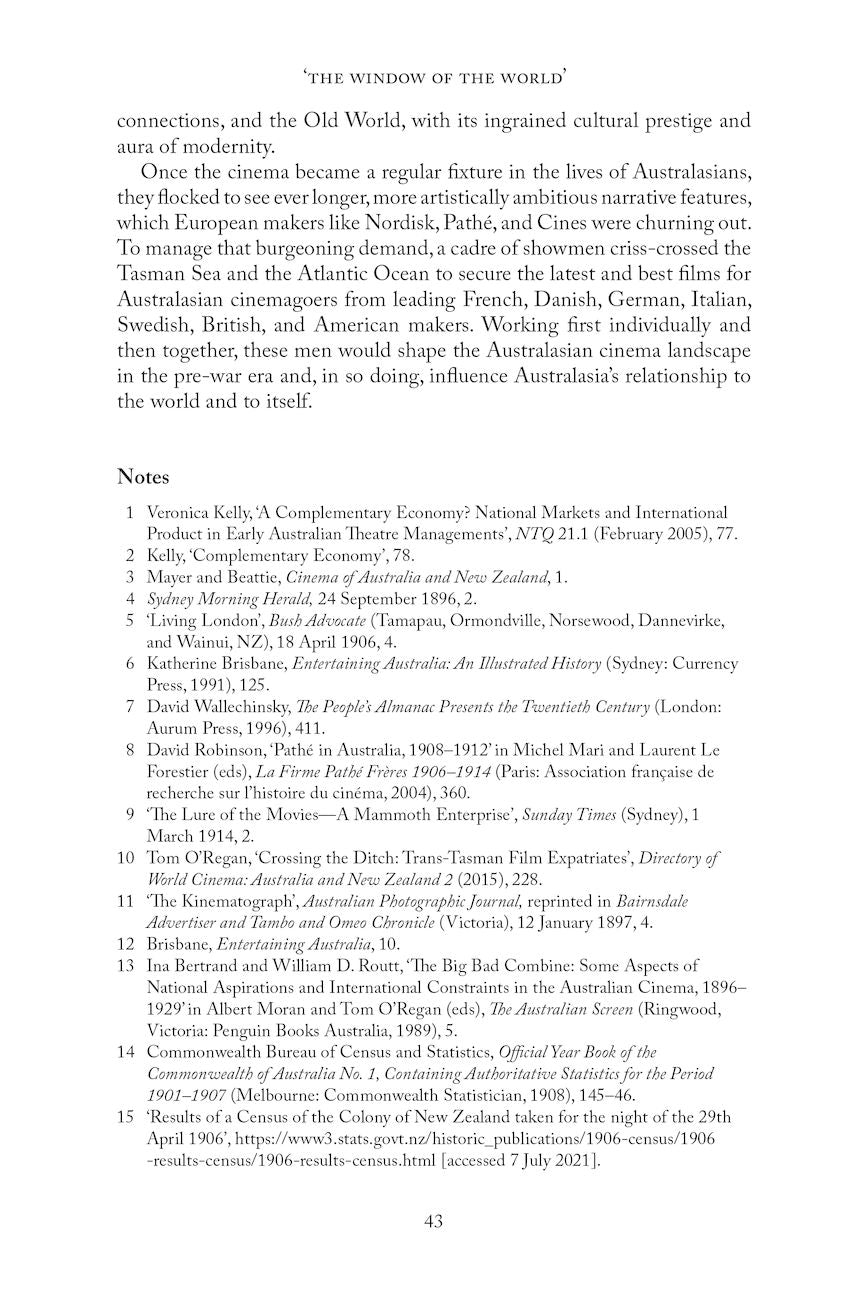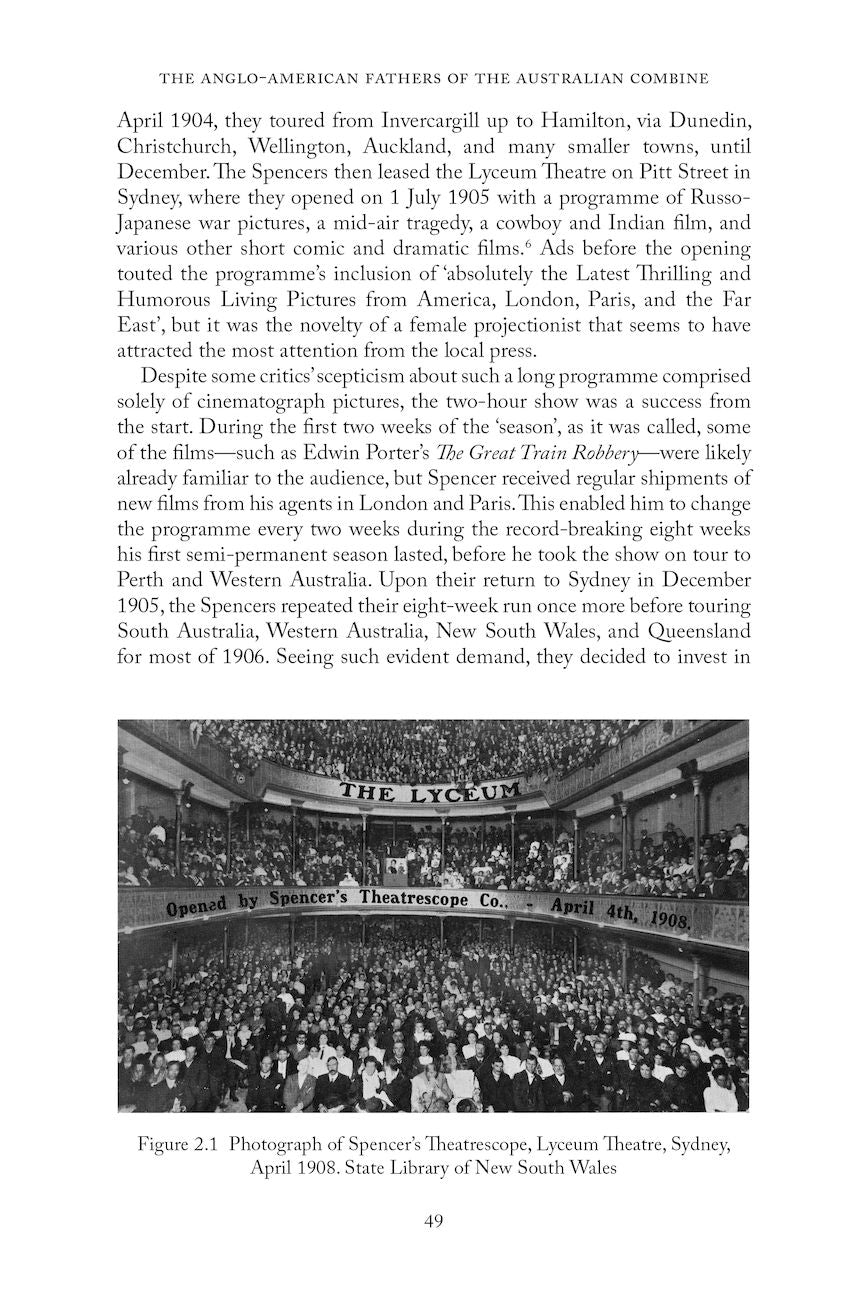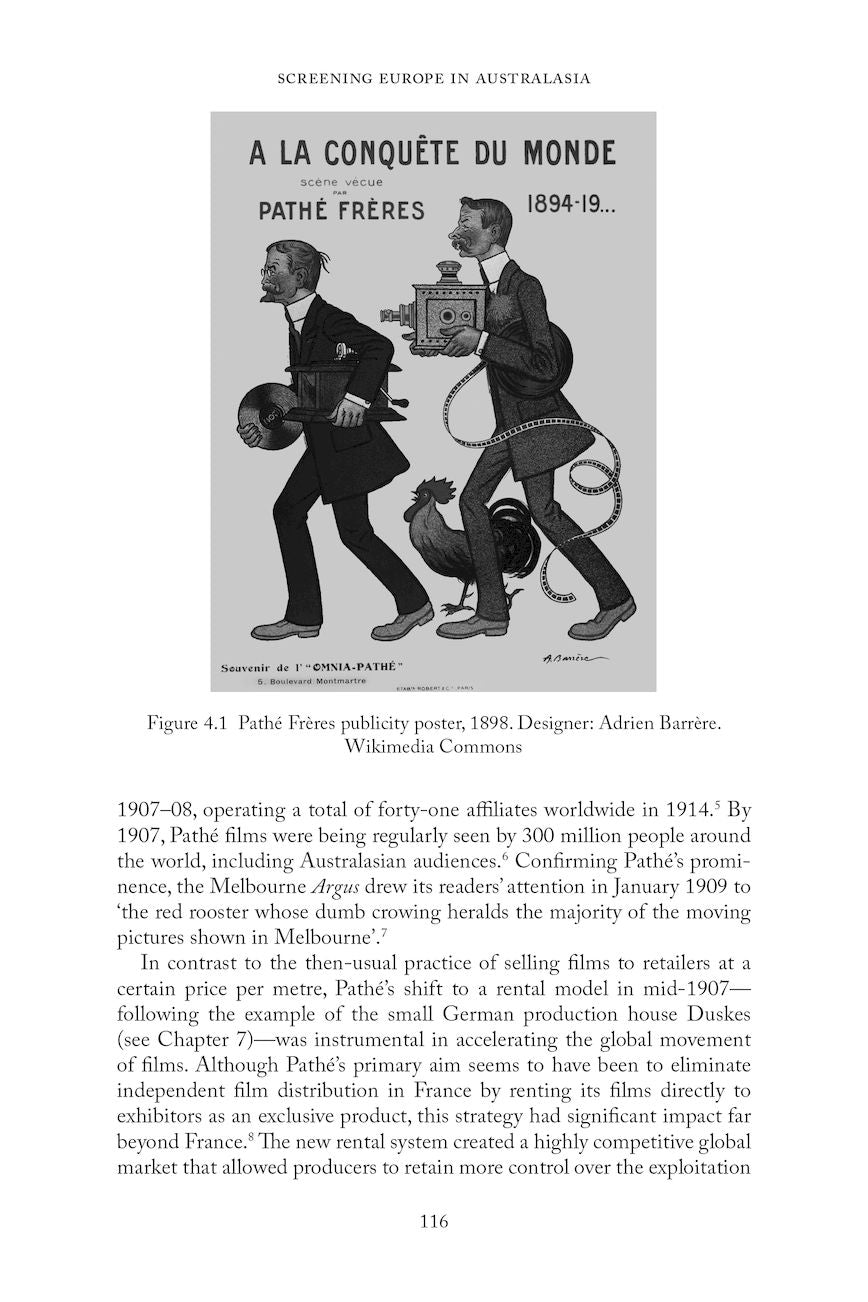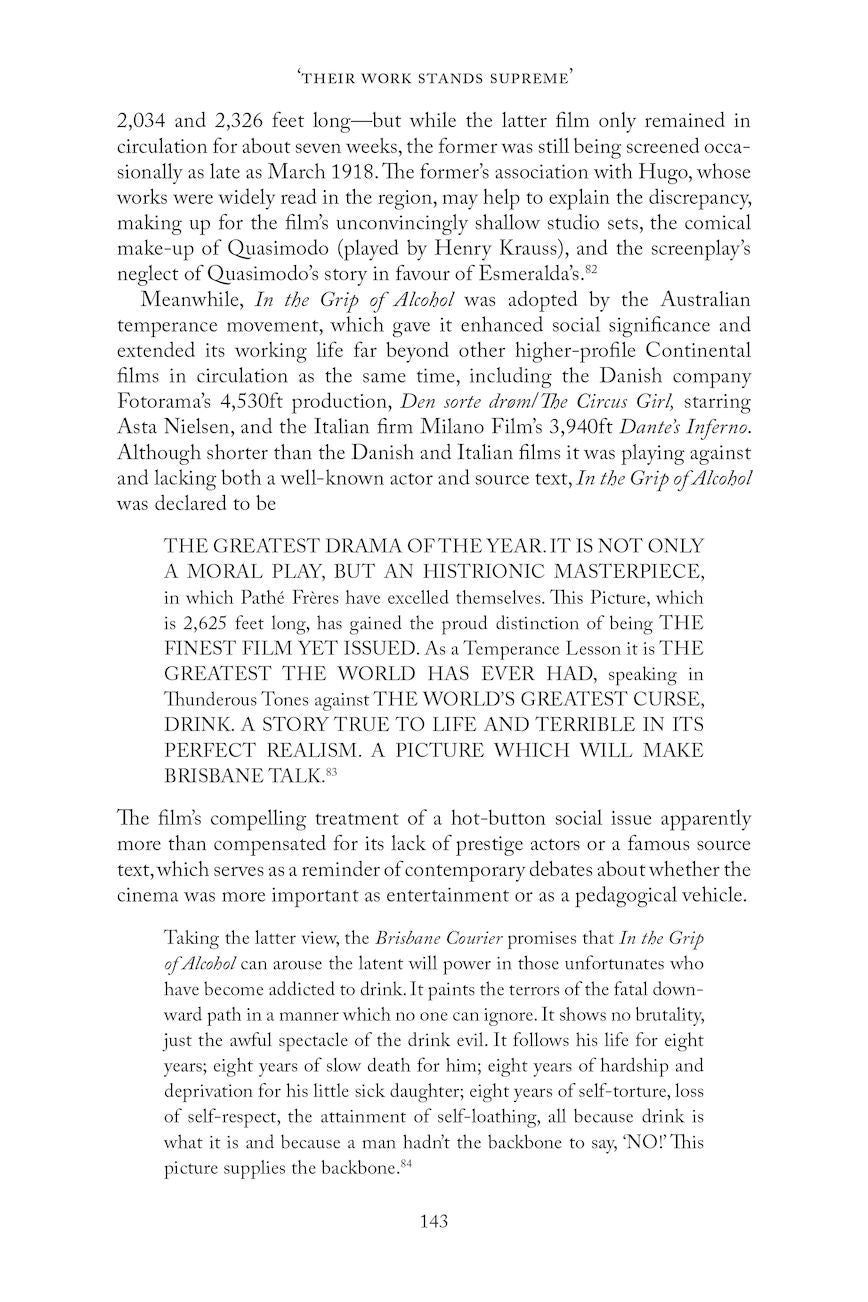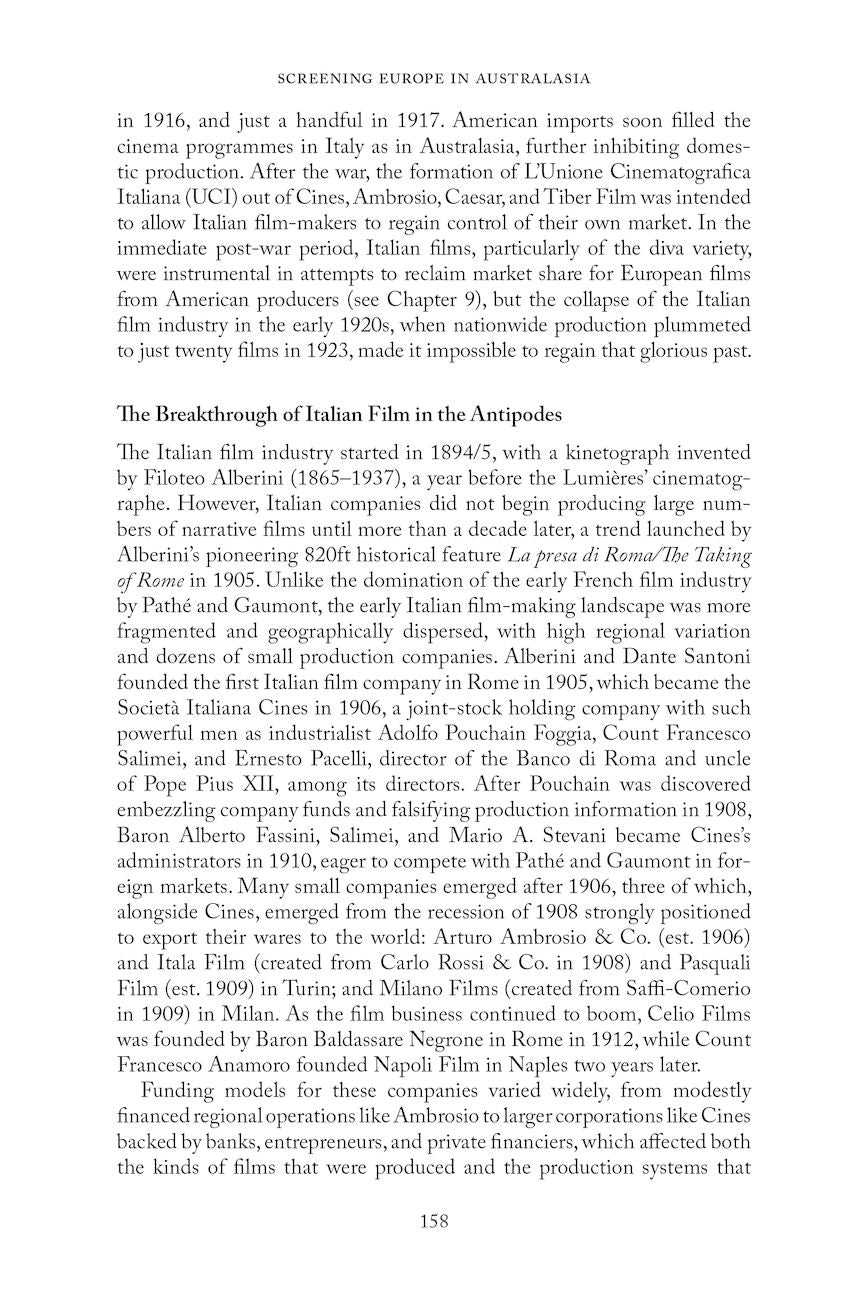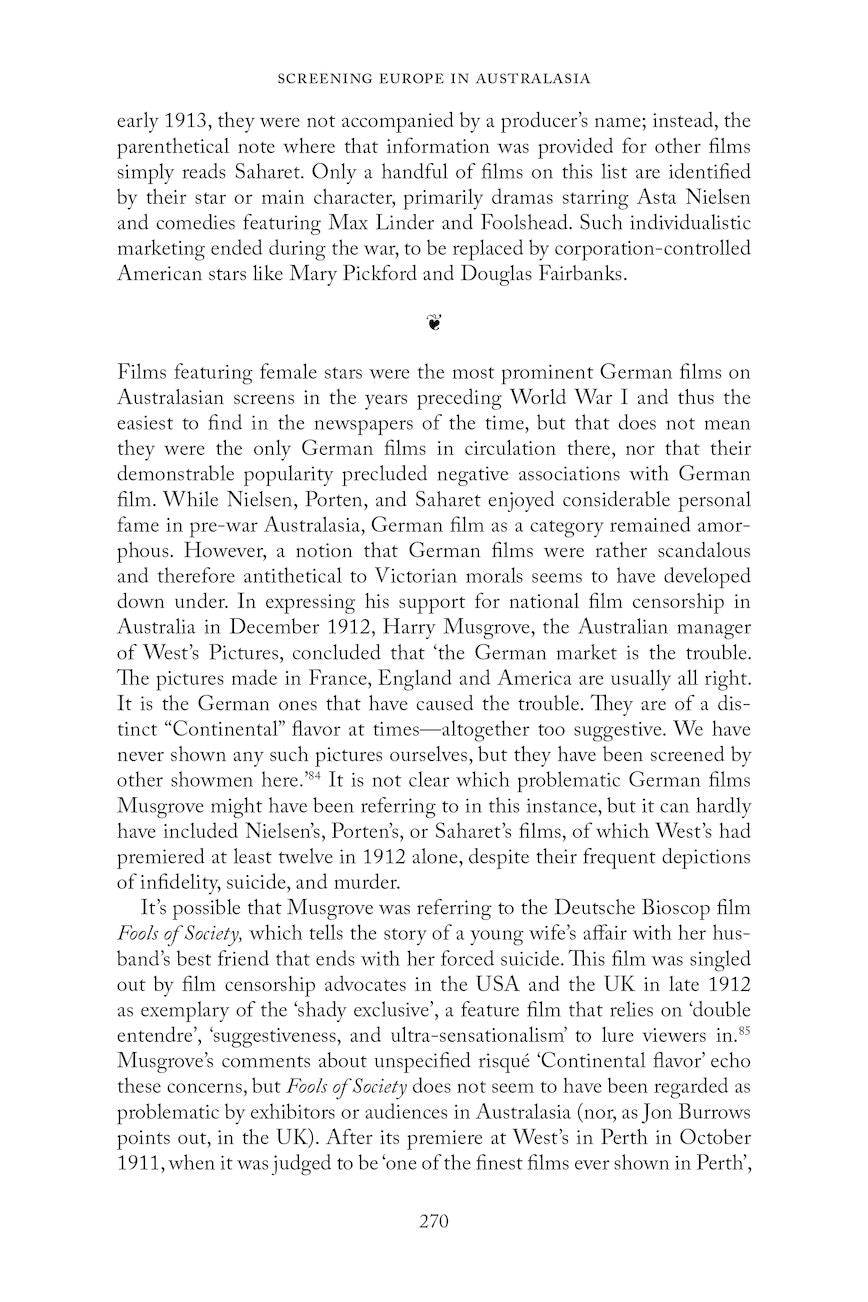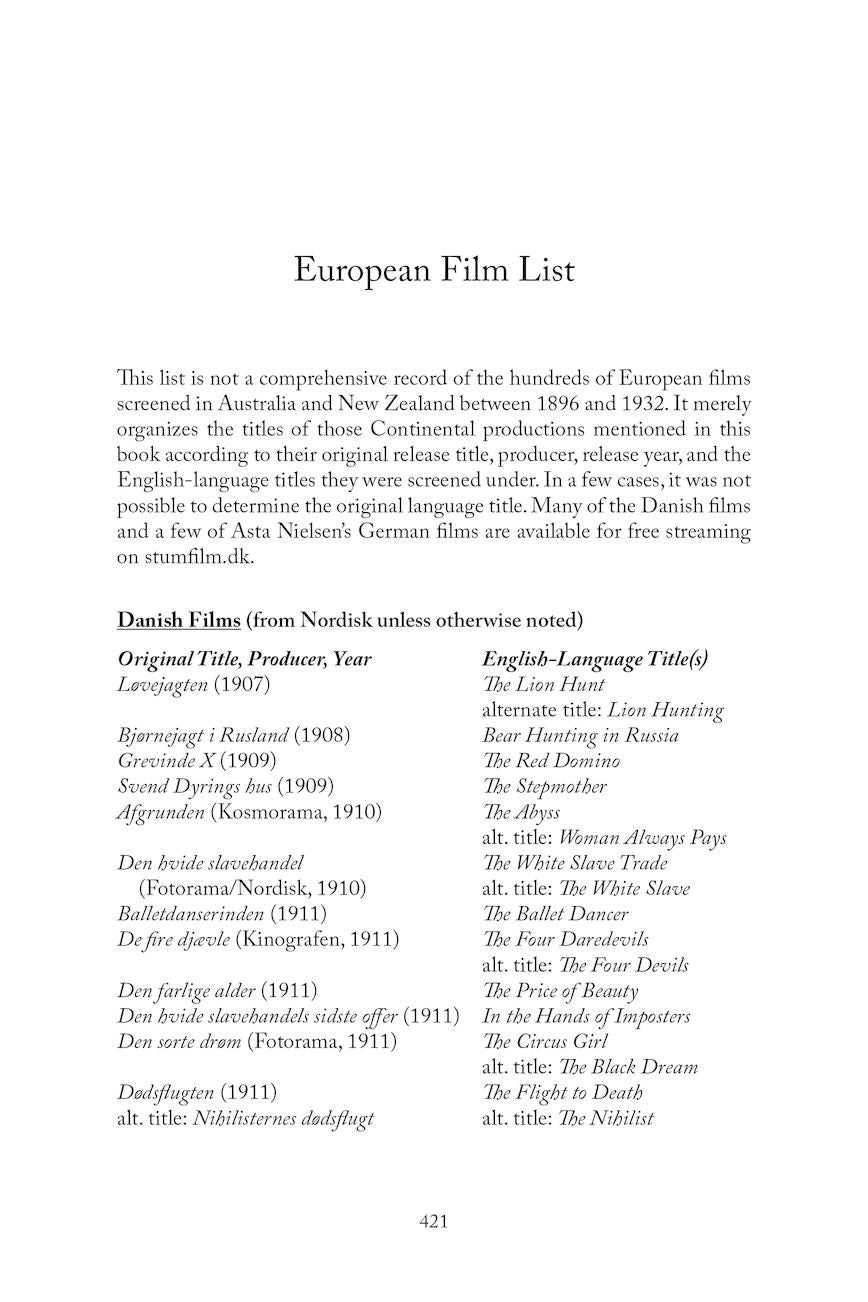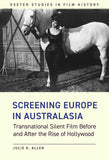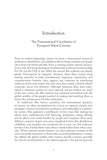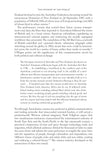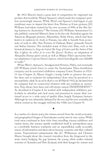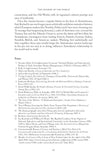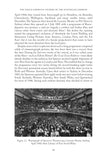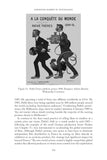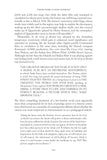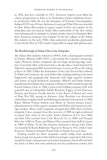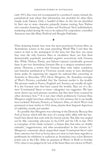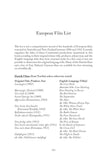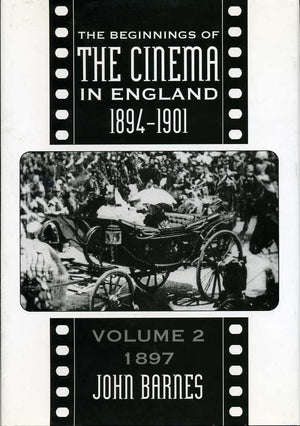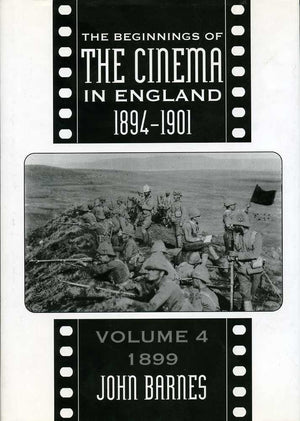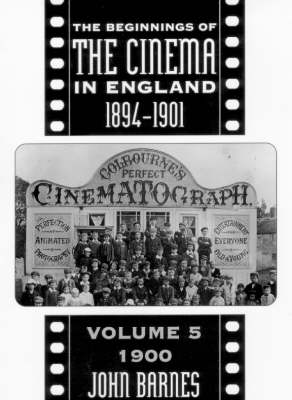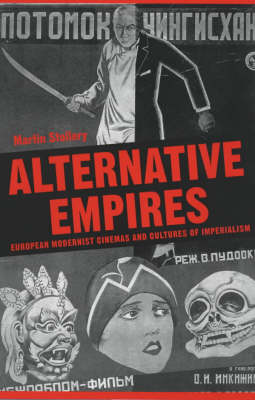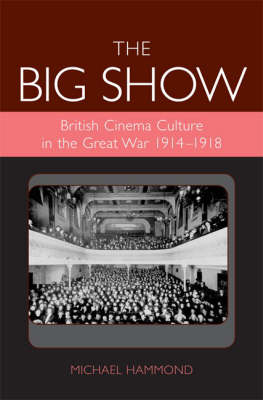University of Exeter Press
Screening Europe in Australasia
Transnational Silent Film Before and After the Rise of Hollywood
Couldn't load pickup availability
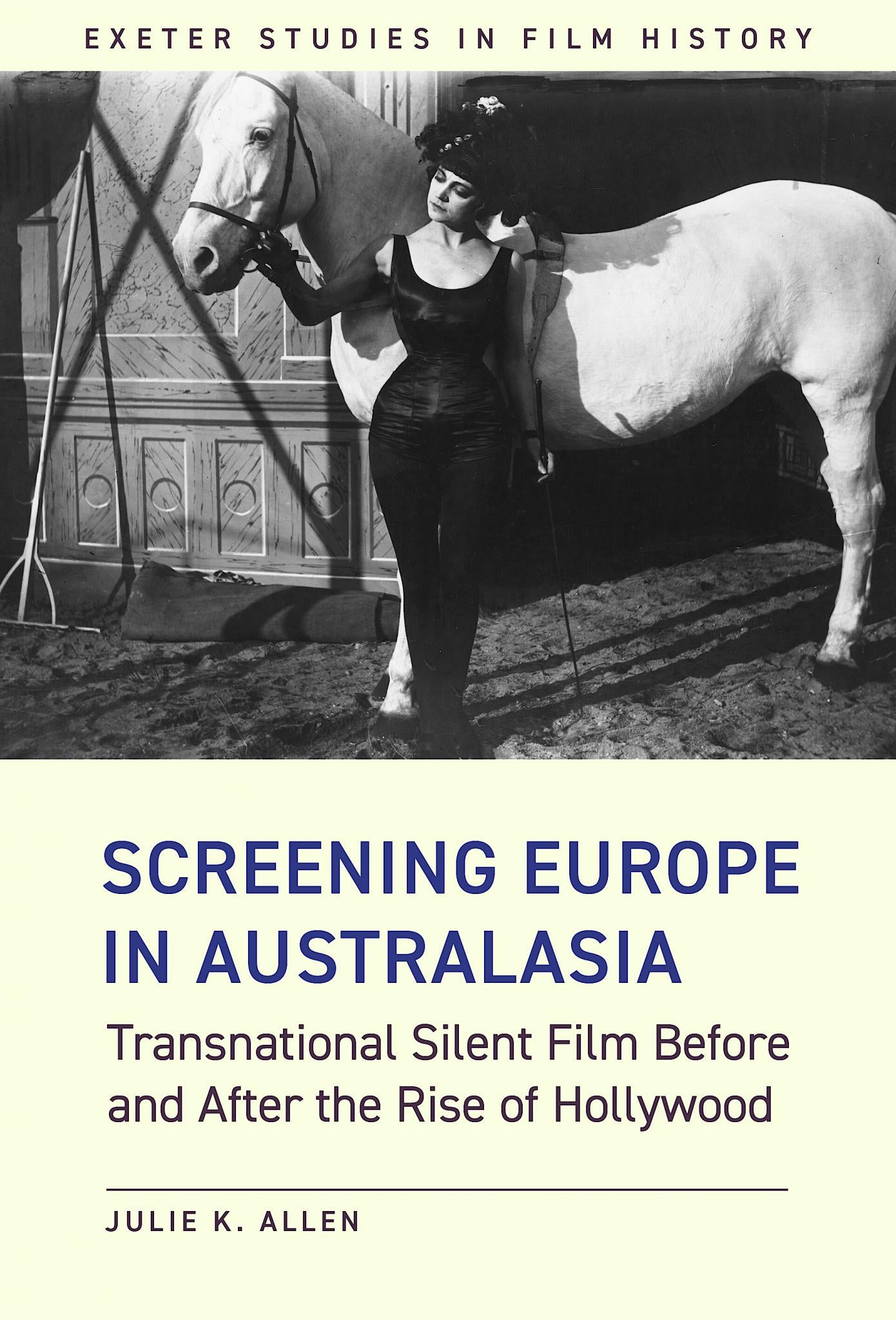
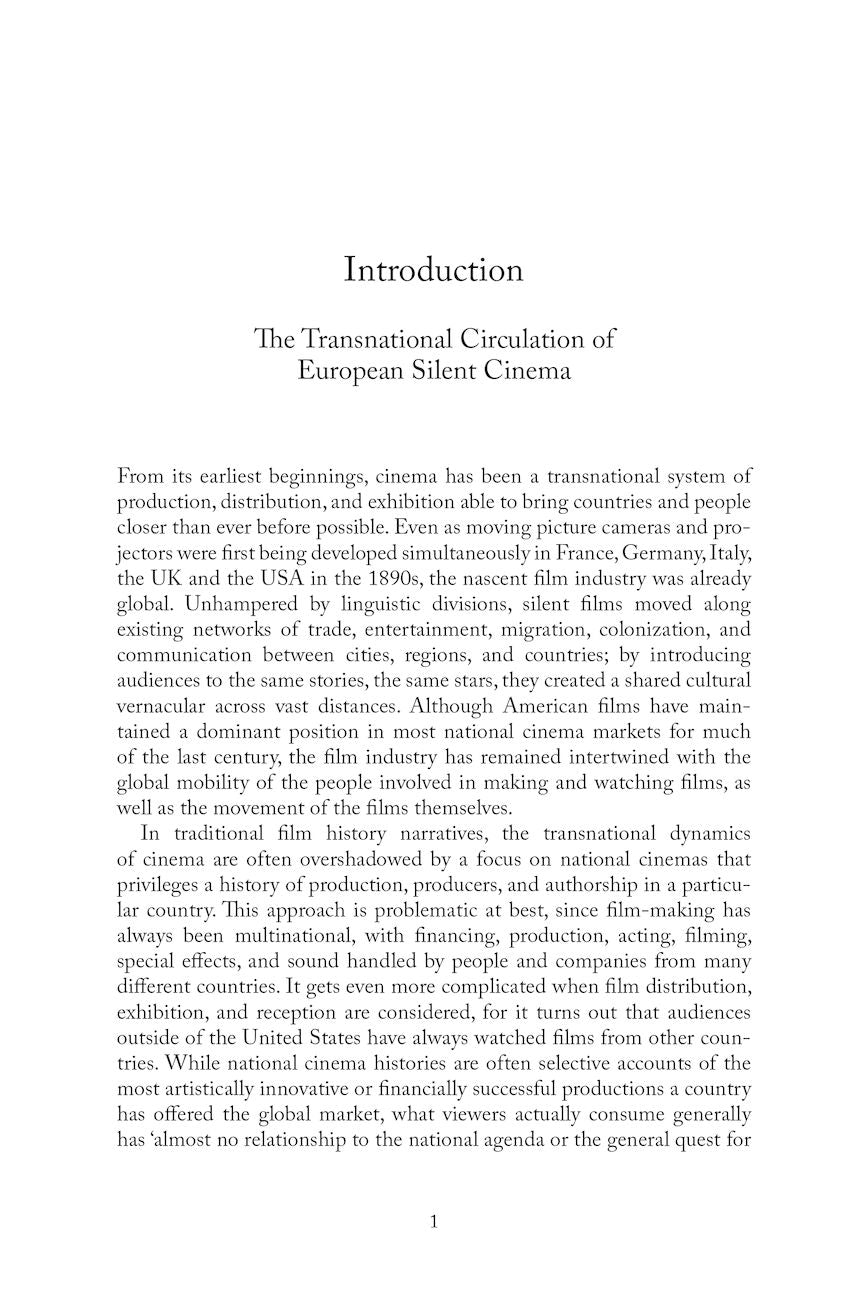
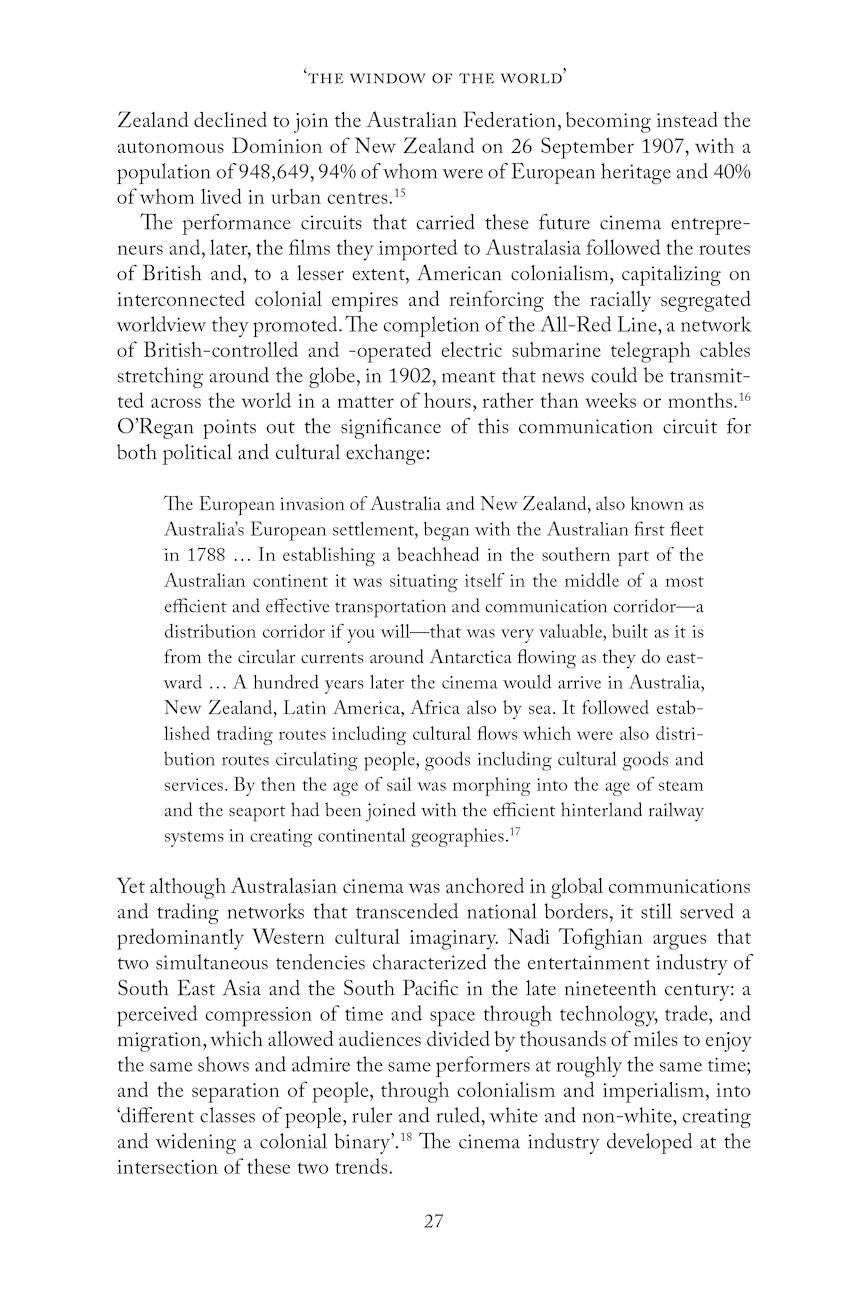
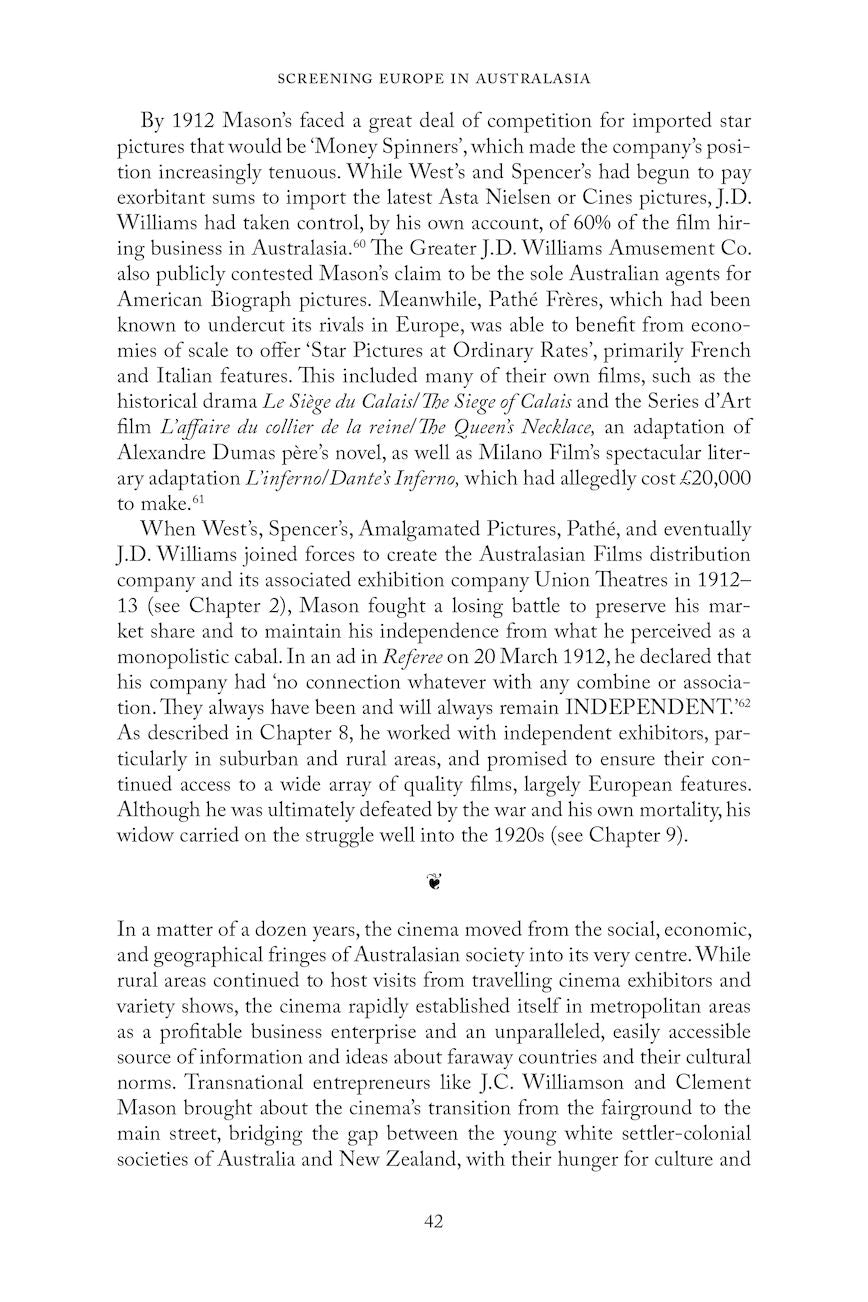
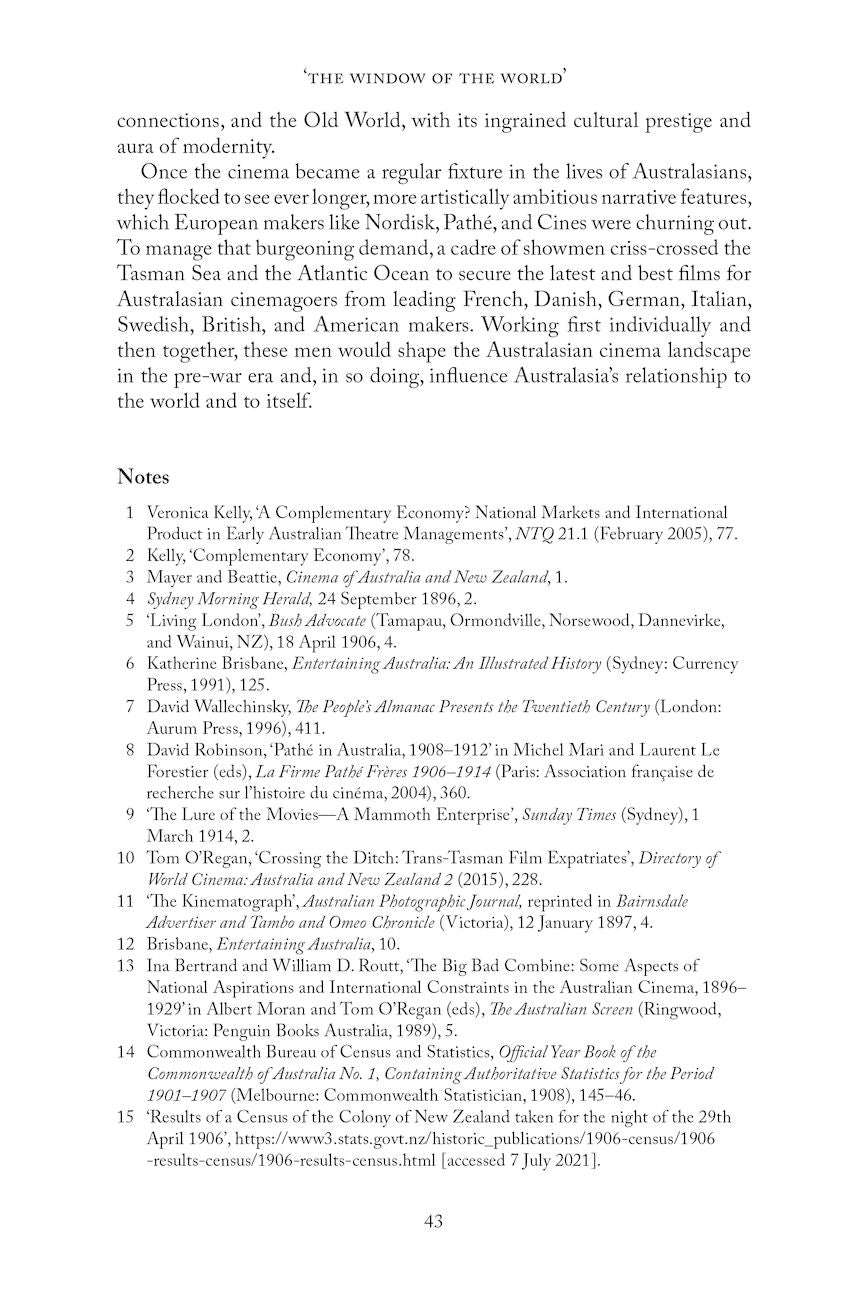
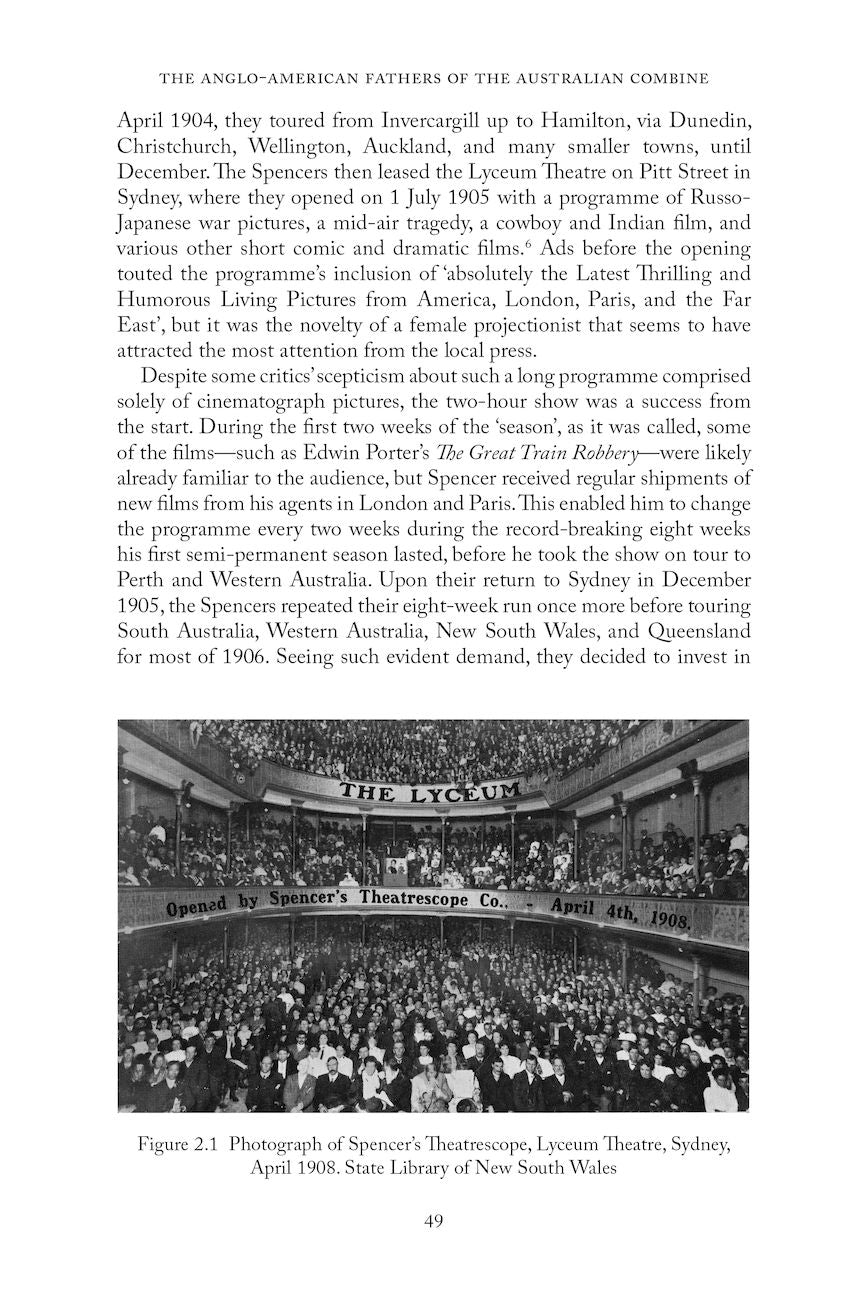
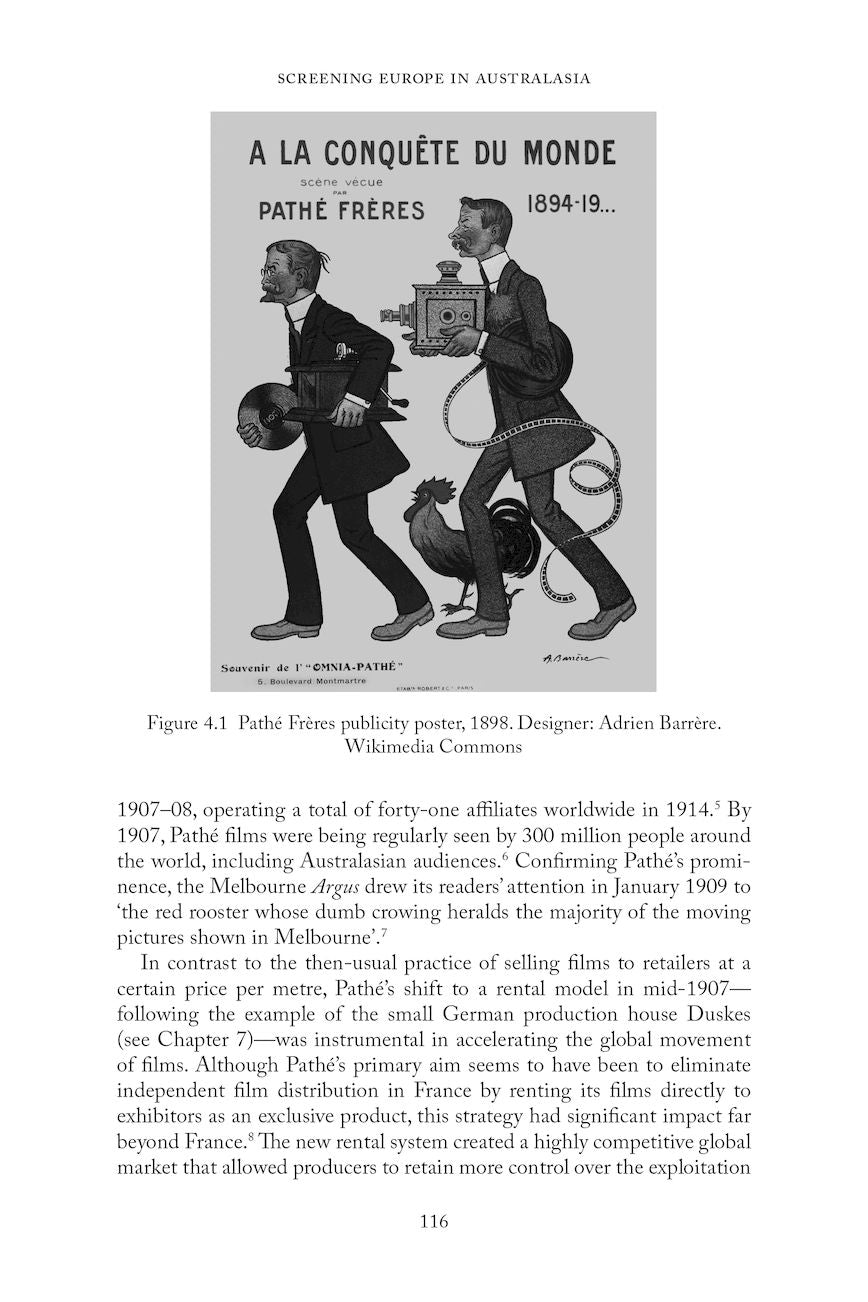
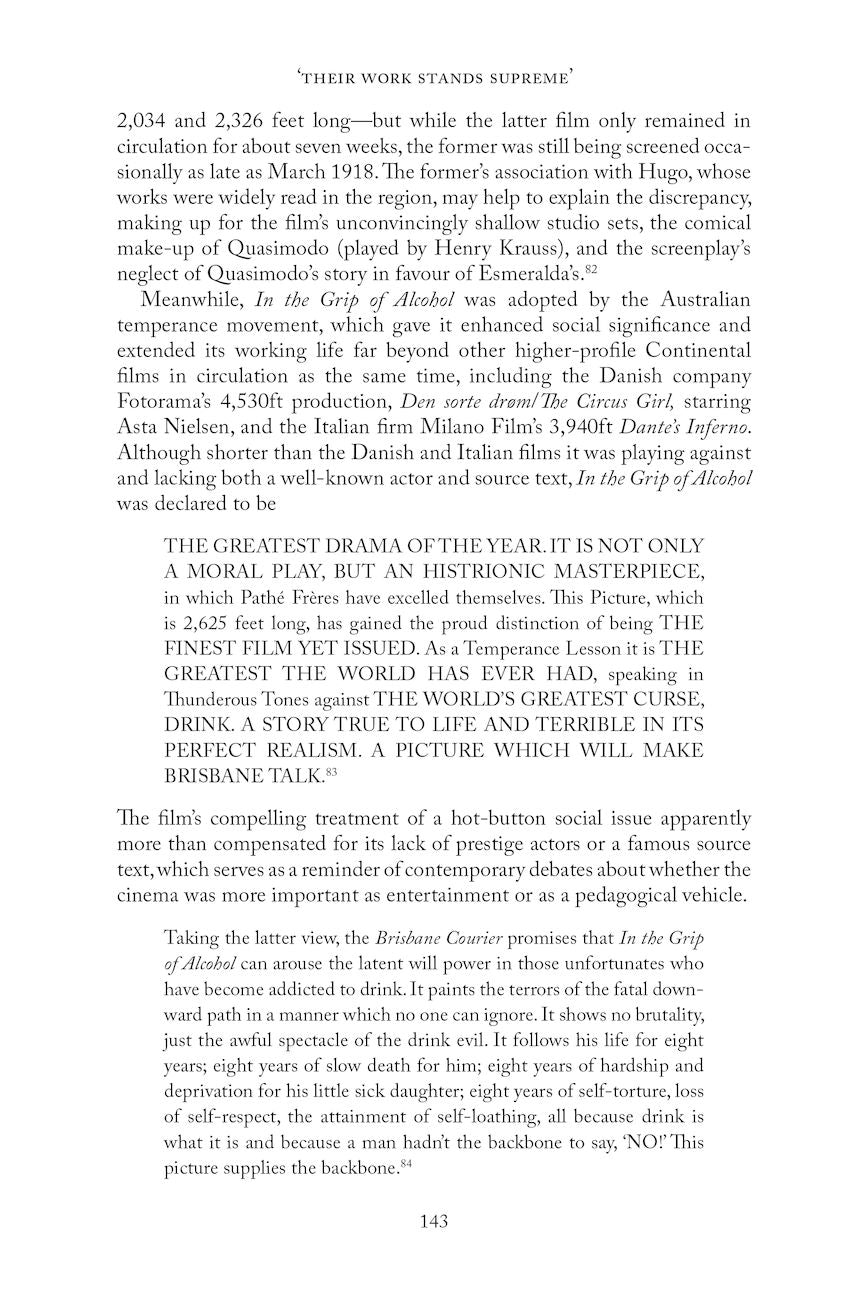
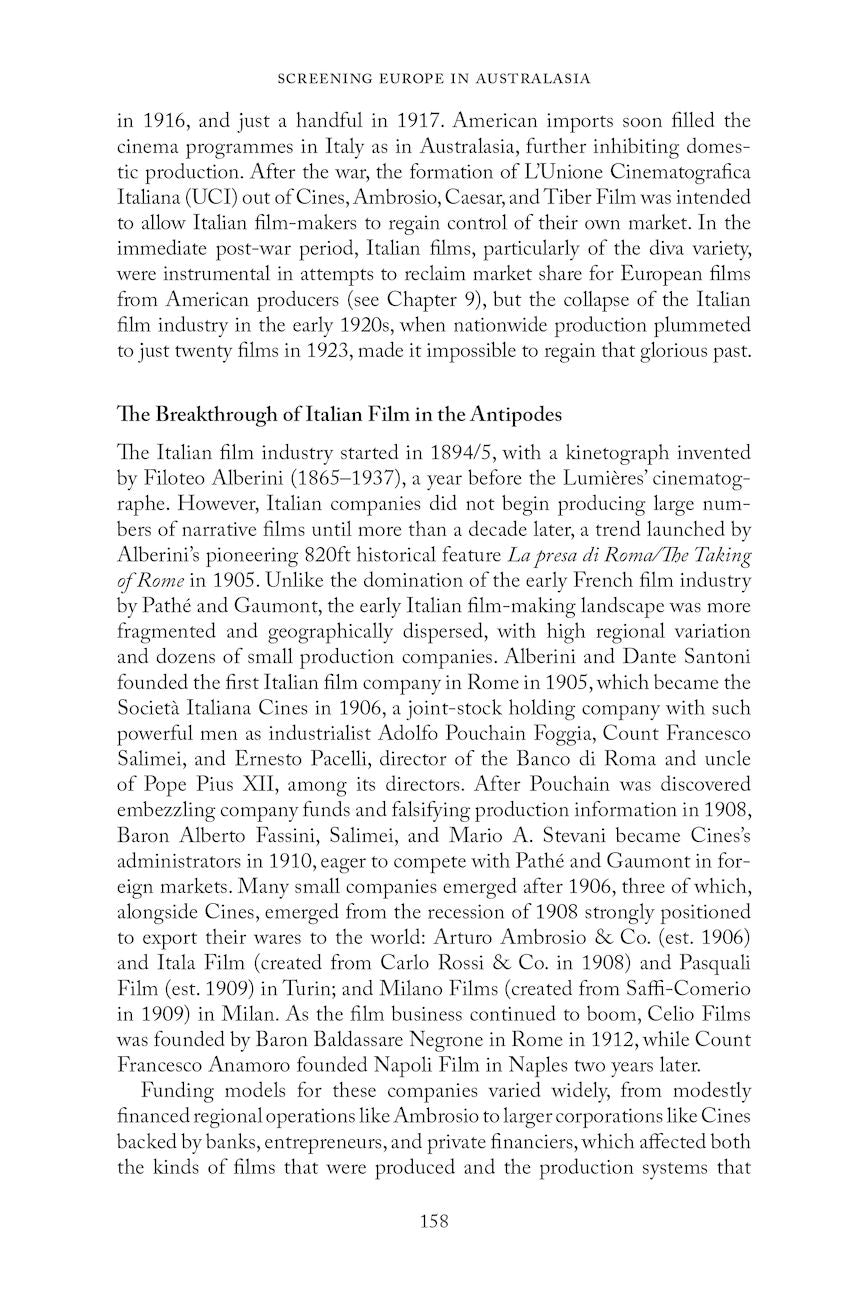
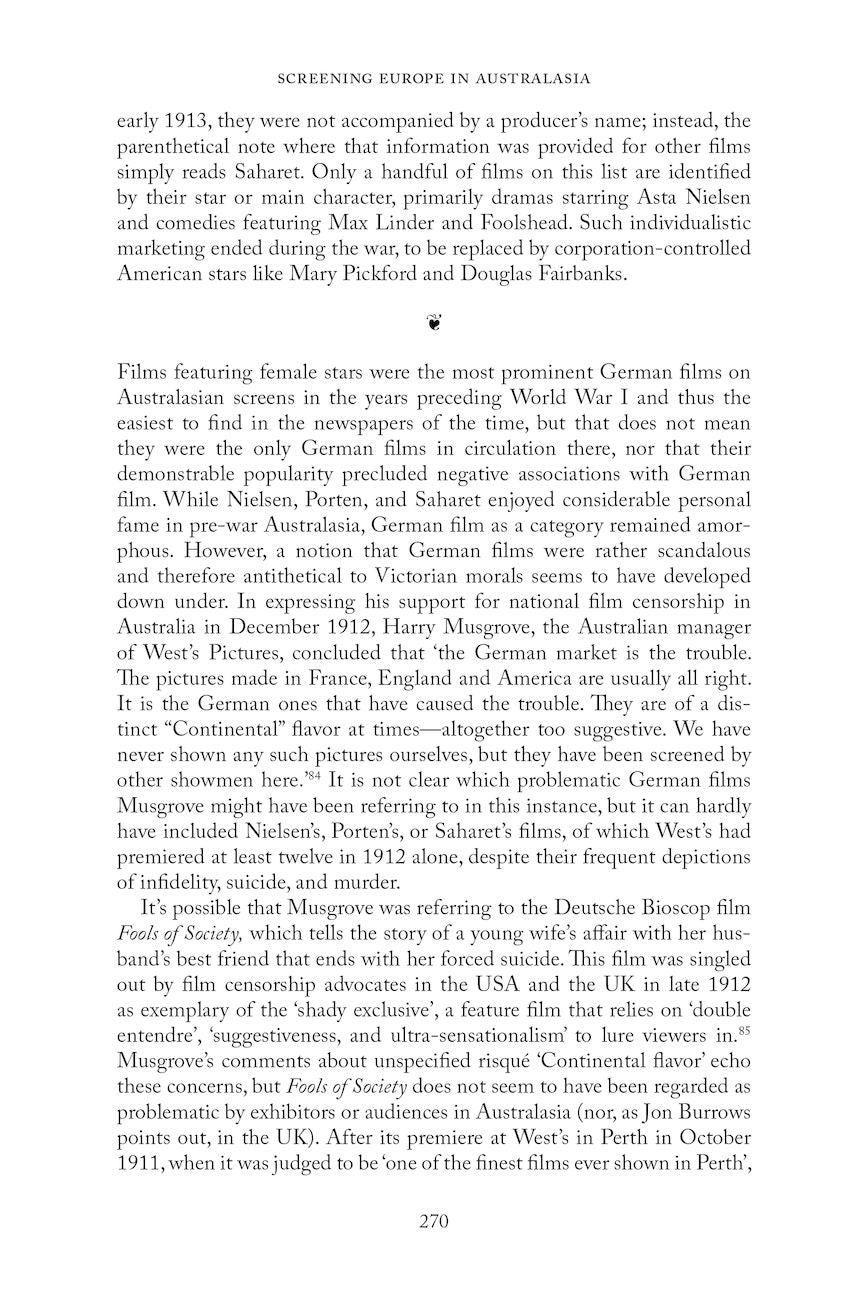

- 484 Pages
Through a detailed study of the circulation of European silent film in Australasia in the early twentieth century, this book challenges the historical myopia that treats Hollywood films as having always dominated global film culture.
Before World War I, European silent feature films were ubiquitous in Australia and New Zealand, teaching Antipodean audiences about Continental cultures and familiarizing them with glamorous European stars, from Asta Nielsen to Emil Jannings. After the rise of Hollywood and then the shift to sound film, this history—and its implications for cross-cultural exchange—was lost. Julie K. Allen recovers that history, with its flamboyant participants, transnational currents, innovative genres, and geopolitical complications, bringing it all vividly to life.
Making ground-breaking use of digitized Australian and New Zealand newspapers, the author reconstructs the distribution and exhibition of European silent films in the Antipodes, along the way incorporating compelling biographical sketches of the ambitious pioneers of the Australasian cinema industry. She reveals the complexity and competitiveness of the early cinema market, in a region with high consumer demand and low domestic production, and frames the dramatic shift to almost exclusively American cinema programming during World War I, contextualizing the rise of the art film in the 1920s in competition with mainstream Hollywood productions.
Professor Emeritus Dr Martin Loiperdinger, University of Trier, GermanyThe author's arguments and conclusions carefully and convincingly draw on well-selected historical sources: archival documentation and the daily Australasian press.
A superb contribution to transnational cinema studies, specifically the history of film distribution, exhibition, and reception in the silent period. Focused on the usually neglected region of Australia and New Zealand, Allen’s book is a model of extensive original research (in several languages), an admirable series of topical chapters, a list of hundreds of imported European film titles, and an enviable, accessible writing style.
Professor Richard Abel
University of Michigan
Sometimes reading a book is like finding the missing jigsaw puzzle piece and with it, the satisfaction of understanding how everything fits together to realize a more complete picture. This is one such book. Julie Allen has, with meticulous research, filled in the gaps to show how the social experience and entrepreneurial economy of cinema in Australasia has, from the outset, been diversly transnational. Screening Europe in Australasia reveals the manifold ways in which the introduction of cinema helped colonial Australia and New Zealand define a relationship to the world, to each other and to themselves. Allen shines an inquisitive lamp on the foundational socio-political drama of the film industry, illuminating its flamboyant cast of characters from a multitude of critical perspectives. The films may have been silent and monochromatic, but this book presents, in full surround sound and vibrant colour, the overlooked early history of European films in the antipodes.
Professor Deb Verhoeven
University of Alberta
List of Figures
Acknowledgments
Part I: Film Distribution and Exhibition in Australasia before World War I
1. “A Window of the World”: Distribution and Exhibition of Early Film in Settler-Colonial Australasia
2. The Anglo-American Fathers of the Australian Combine: Cosens Spencer, T. J. West, and J. D. Williams
3. Trans-Tasman Cinema Traffic: Film Distribution and Exhibition in New Zealand Through World War I
Part II: European Films on Australasian Screens Through 1917
4. “THEIR WORK STANDS SUPREME”: Pathé Frères, Sarah Bernhardt, and French Art Films
5. “The most important event in the annals of the biograph in Australia”: The Triumph of Italian Historical Epics
6. “Like the hallmark on silver”: The Unquestioned Quality of Nordic Films
7. The Female Faces of German Film Abroad: Asta Nielsen, Henny Porten, and Madame Saharet
8. “We Fear No Combine”: Clement Mason’s European Film Imports in 1913
Part III: Competing with Hollywood on Quality
9. “Films as Foreign Offices:” Mason Super Films’ Promotion of Swedish and Italian Art Film in Australasia, 1919-25
10. The Rise of UFA, Cinema Art Films, and Anglo-German Solidarity against Hollywood
Works Cited
Appendix: Film List
- 484 Pages







